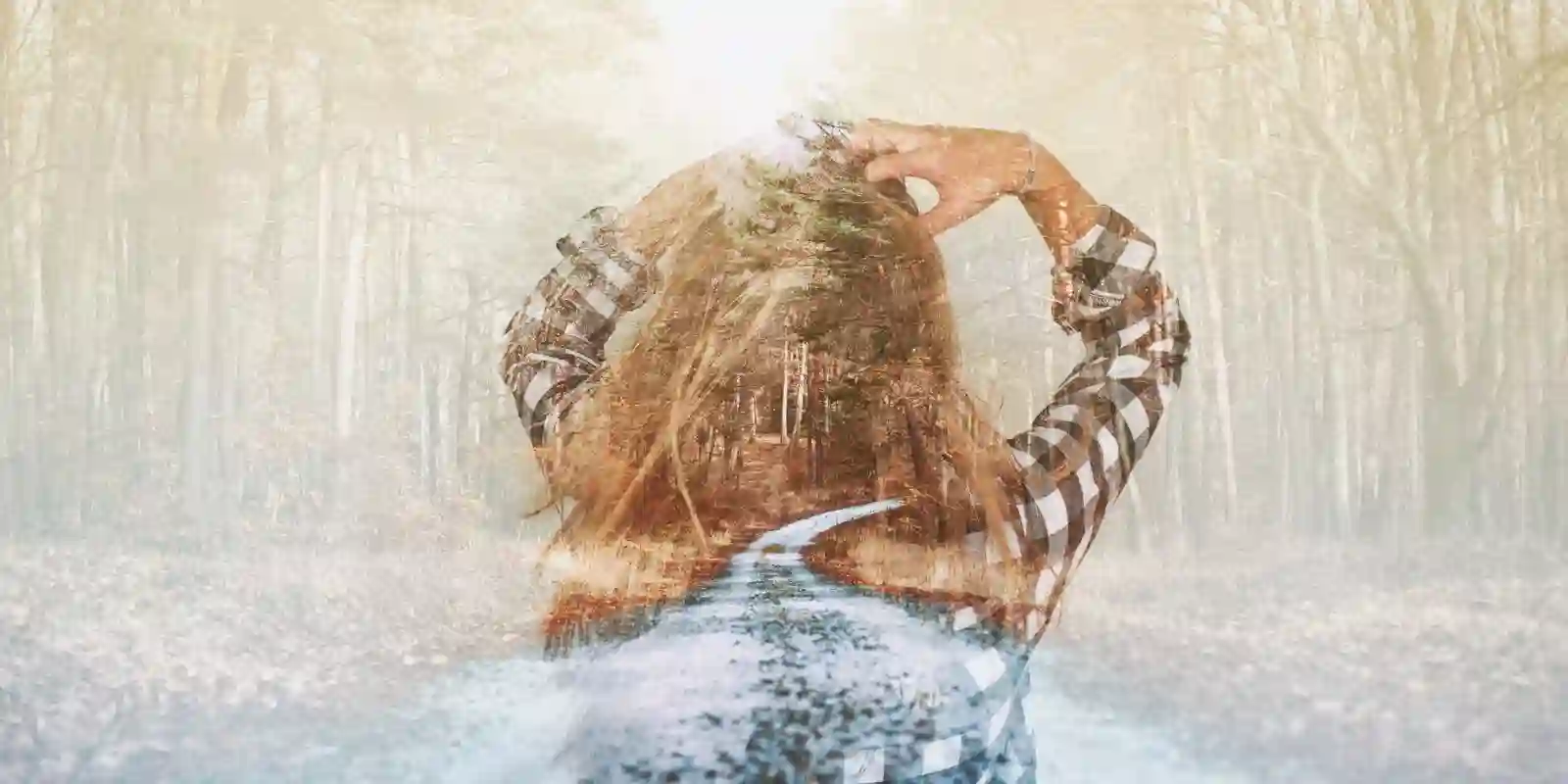Lightning

Draws a customizable bolt of lightning, and leaves the new layers intact so that you can tweak them afterwards.
Intro
class LightningPath(object):
def __init__(self, image, start, end, depth=1):
self.image = image
self.start, self.end = start, end
self.depth = max(1, depth)
# NOTE length is the as-the-crow-flies distance AND NOT the length of the actual path/beziers
self.length = int(self.end.distance_from(self.start))
self.angle = self.end.angle_of(self.start)
# minimum possible starting point for branches
self.branch_point = self.length - (self.length / (self.depth+1))
self.path = []
noise_defaults = [
(8, 2.5, 0.40, 0.4, 200, self.length/2),
(8, 2.0, 0.55, 0.2, 200, self.length)
]
pick = min(self.depth-1, 1)
self.octaves, self.lacunarity, self.gain, self.scale, self.amplitude, self.hgrid = noise_defaults[pick]
self.brush_size = 0
pass
''' adds two paths together; does NOT check that they are continuous, in the same image, nor of the same depth '''
def __add__(self, other):
obj = LightningPath(self.image, self.start, other.end, self.depth)
obj.length = self.length + other.length
obj.path = self.path + other.path
return obj
pass
''' because random.choice(path) only returns the Point object of a path and I want the index too '''
def random_point_along_path(self):
index = random.randint(0, len(self.path)-1)
return index, self.path[index]
pass
''' brush details for this depth '''
def set_brush(self):
if self.brush_size == 0:
self.brush_size = int(self.image.width/150)
if self.depth > 1:
self.brush_size = max(1, int(self.brush_size / self.depth))
pdb.gimp_context_set_paint_method("gimp-paintbrush") # make sure we have the right tool selected in this context else gimp errors when you have a non-painting tool selected
pdb.gimp_context_set_brush("1. Pixel")
pdb.gimp_context_set_brush_size(self.brush_size)
pdb.gimp_context_set_brush_hardness(0.75)
pass
''' makes a noisy wave along a straight line '''
def make_path(self):
pn = PerlinNoise(self.octaves, 0.1, self.scale)
for i in xrange(self.length):
n = int(normalize(pn.fractal(i, self.hgrid, self.lacunarity, self.gain)) * self.amplitude) - self.amplitude/2
self.path.append(Point(i,n))
pass
''' rotates that wave to follow our real start->end line '''
def rotate_path(self):
for index, item in enumerate(self.path):
# rotate x,y around the origin - https://en.wikipedia.org/wiki/Rotation_matrix
x = int(item.x * math.cos(self.angle) - item.y * math.sin(self.angle))
y = int(item.x * math.sin(self.angle) + item.y * math.cos(self.angle))
# translate x,y according to the offset
self.path[index] = Point(x + self.start.x, y + self.start.y)
pass
''' trebles each of the path coords so gimp can draw the curve '''
def make_beziers(self):
self.beziers = []
for i in self.path:
# add this to our curve
self.beziers.extend([i.x,i.y, i.x,i.y, i.x,i.y])
pass
''' plot the bezier curve as a gimp path '''
def draw_beziers_path(self):
vectors = pdb.gimp_vectors_new(self.image, "Lightning Path")
pdb.gimp_image_insert_vectors(self.image, vectors, None, 0)
if len(self.beziers) > 6:
pdb.gimp_vectors_stroke_new_from_points(vectors, VECTORS_STROKE_TYPE_BEZIER, len(self.beziers), self.beziers, False)
return vectors
pass
''' and draw the bezier curve - solid color, no messing around with gradient overlays etc '''
def draw_beziers(self, group):
layer = pdb.gimp_layer_new(self.image, self.image.width, self.image.height, RGBA_IMAGE, "Main Bolt", 100.00, LAYER_MODE_NORMAL)
pdb.gimp_image_insert_layer(self.image, layer, group, 0)
self.set_brush()
self.make_beziers()
vectors = self.draw_beziers_path()
pdb.gimp_drawable_edit_stroke_item(layer, vectors)
pdb.gimp_image_remove_vectors(self.image, vectors)
return layer
pass
def draw_beziers_lighting(self, group):
pdb.gimp_progress_set_text("Drawing main bolt (lighting) ...")
pdb.gimp_image_undo_freeze(self.image)
layerc = self.draw_beziers(group)
layer1 = pdb.gimp_layer_copy(layerc, True)
layer2 = pdb.gimp_layer_copy(layerc, True)
layer3 = pdb.gimp_layer_copy(layerc, True)
layer4 = pdb.gimp_layer_copy(layerc, True)
pdb.gimp_image_remove_layer(self.image, layerc)
pdb.gimp_image_insert_layer(self.image, layer4, group, 1)
pdb.gimp_image_insert_layer(self.image, layer3, group, 1)
pdb.gimp_image_insert_layer(self.image, layer2, group, 1)
pdb.gimp_image_insert_layer(self.image, layer1, group, 1)
pdb.plug_in_gauss(self.image, layer1, 10,10, 0)
pdb.plug_in_gauss(self.image, layer2, 20,20, 0)
pdb.plug_in_gauss(self.image, layer3, 35,35, 0)
pdb.plug_in_gauss(self.image, layer4, 70,70, 0)
pdb.gimp_drawable_brightness_contrast(layer2, 0.3, 0.3)
pdb.gimp_drawable_brightness_contrast(layer3, -0.2, 0)
pdb.gimp_drawable_brightness_contrast(layer4, -0.3, 0)
layer1.mode = LAYER_MODE_HARDLIGHT
layer = pdb.gimp_image_merge_down(self.image, layer1, CLIP_TO_IMAGE)
layer = pdb.gimp_image_merge_down(self.image, layer, CLIP_TO_IMAGE)
layer = pdb.gimp_image_merge_down(self.image, layer, CLIP_TO_IMAGE)
layer.name = "Main Bolt (Underlay)"
# take our now single lighting layer and do some more blurry things to it
layer2 = pdb.gimp_layer_copy(layer, True)
layer3 = pdb.gimp_layer_copy(layer, True)
pdb.gimp_image_insert_layer(self.image, layer2, group, 2)
pdb.gimp_image_insert_layer(self.image, layer3, group, 3)
pdb.plug_in_mblur(self.image, layer2, 2, 100, 90, self.start.x, self.start.y)
pdb.plug_in_mblur(self.image, layer3, 2, 250, 90, self.start.x, self.start.y)
pdb.plug_in_whirl_pinch(self.image, layer2, 0.0, -1.0, 1.2)
pdb.plug_in_whirl_pinch(self.image, layer3, 0.0, -1.0, 1.2)
pdb.gimp_drawable_brightness_contrast(layer2, -0.5, -0.1)
pdb.gimp_drawable_brightness_contrast(layer2, -0.3, 0)
pdb.gimp_drawable_brightness_contrast(layer3, -0.5, 0)
pdb.gimp_drawable_brightness_contrast(layer3, -0.5, 0)
pdb.gimp_drawable_brightness_contrast(layer3, -0.2, 0) # yes, you need to repeat b/c adjustments if you want to change a layer that much
layer2 = pdb.gimp_image_merge_down(self.image, layer2, CLIP_TO_IMAGE)
layer2.name = "Main Bolt (Underlay 2)"
layer2.opacity = 40.0
pdb.gimp_image_undo_thaw(self.image)
return layer
pass
''' paint the plain x,y coords as a gradient pixel by pixel - looks better than a solid stroke but takes longer '''
def draw_path(self, group):
pdb.gimp_progress_set_text("Drawing child strokes ...")
pdb.gimp_image_undo_freeze(self.image)
layer = pdb.gimp_layer_new(self.image, self.image.width, self.image.height, RGBA_IMAGE, "Side Bolt", 100.00, LAYER_MODE_NORMAL)
pdb.gimp_image_insert_layer(self.image, layer, group, 0)
self.set_brush()
for index, item in enumerate(self.path):
percent = float(index)/float(self.length)
pdb.gimp_context_set_opacity((1 - percent) * 100)
pdb.gimp_paintbrush(layer, 0, 2, (item.x,item.y), PAINT_CONSTANT, 0)
#pdb.gimp_paintbrush(layer, 0, 2, (item.x,item.y), PAINT_CONSTANT, 0)
#pdb.gimp_paintbrush(layer, 0, 2, (item.x,item.y), PAINT_CONSTANT, 0)
pdb.gimp_progress_update(percent)
pdb.gimp_image_undo_thaw(self.image)
return layer
pass
def WeatherLightningWrapper(args):
image, layer, args = args
pdb.gimp_progress_init("Drawing lighting ...", None)
#random.seed(seed)
width = image.width
height = image.height
start = Point(width * args['start_x']/100, height * args['start_y']/100)
mid = Point(width * args['mid_x']/100, height * args['mid_y']/100)
end = Point(width * args['end_x']/100, height * args['end_y']/100)
n_main = max(1, min(10, int(args['n_main']))) # between 1-10 main bolts
n_side = max(0, min(20, int(args['n_side']))) # and 0-20 side bolts
side_points = []
group = gimp.GroupLayer(image)
group.name = "Lightning"
pdb.gimp_image_insert_layer(image, group, None, 0)
for i in range(n_main):
pdb.gimp_progress_set_text("Drawing main bolt(s) ...")
path1 = LightningPath(image, start, mid)
path1.make_path()
path1.rotate_path()
if args['move_end_point_a_bit']:
end.move_point(width/20, height/20) # 5% wiggle room
path2 = LightningPath(image, mid, end)
path2.make_path()
path2.rotate_path()
main_path = path1 + path2
size_mod = random.choice([120,150,180,200])
main_path.brush_size = int(image.width/size_mod)
pdb.gimp_context_set_foreground(args['color_bolt'])
layer1 = main_path.draw_beziers(group)
pdb.gimp_context_set_foreground(args['color_lighting'])
layer2 = main_path.draw_beziers_lighting(group)
# need to pick points/angles here from each bolt for the side ones
for i in range(n_side):
j, side_start = main_path.random_point_along_path()
side_next = main_path.path[j+1]
angle = side_next.angle_of(side_start)
distance = random.randint(int(main_path.length/15), int(main_path.length/3))
#debug.write("{}: {} {} {}\n".format(i, main_path.angle, angle, distance))
side_end = side_start.make_point(distance, angle)
side_end.check_bounds(width, height)
#debug.write("{}: {} to {} @ {} {}\n".format(i, side_start, side_end, distance, angle))
side_points.append((side_start, side_end))
pdb.gimp_context_set_foreground(args['color_bolt']) # reset after doing the main bolt lighting
random.shuffle(side_points)
for i in range(0, n_side): # still only picking n_side items from a list n_main*n_side long
start, end = side_points[i]
side_path = LightningPath(image, start, end, 2)
side_path.make_path()
side_path.rotate_path()
layer1 = side_path.draw_path(group)
layer2 = pdb.gimp_layer_copy(layer1, True)
layer2.mode = LAYER_MODE_HARDLIGHT
pdb.gimp_image_insert_layer(image, layer2, None, 1)
pdb.plug_in_gauss(image, layer2, 10,10, 0)
pdb.gimp_brightness_contrast(layer2, 0, 123)